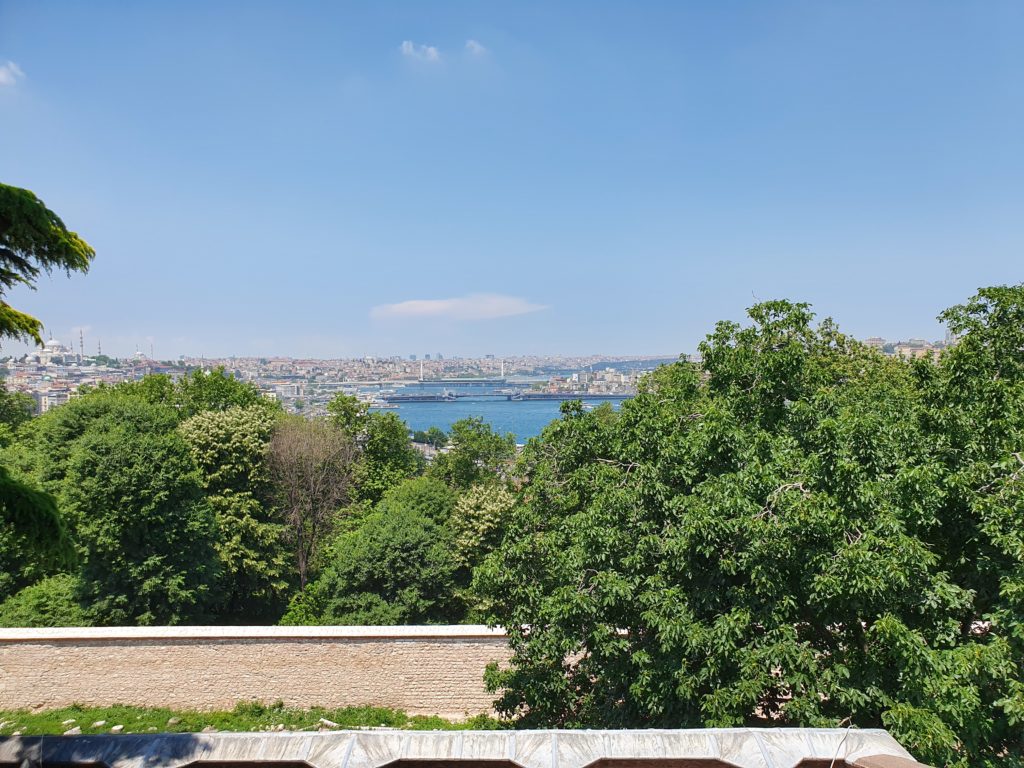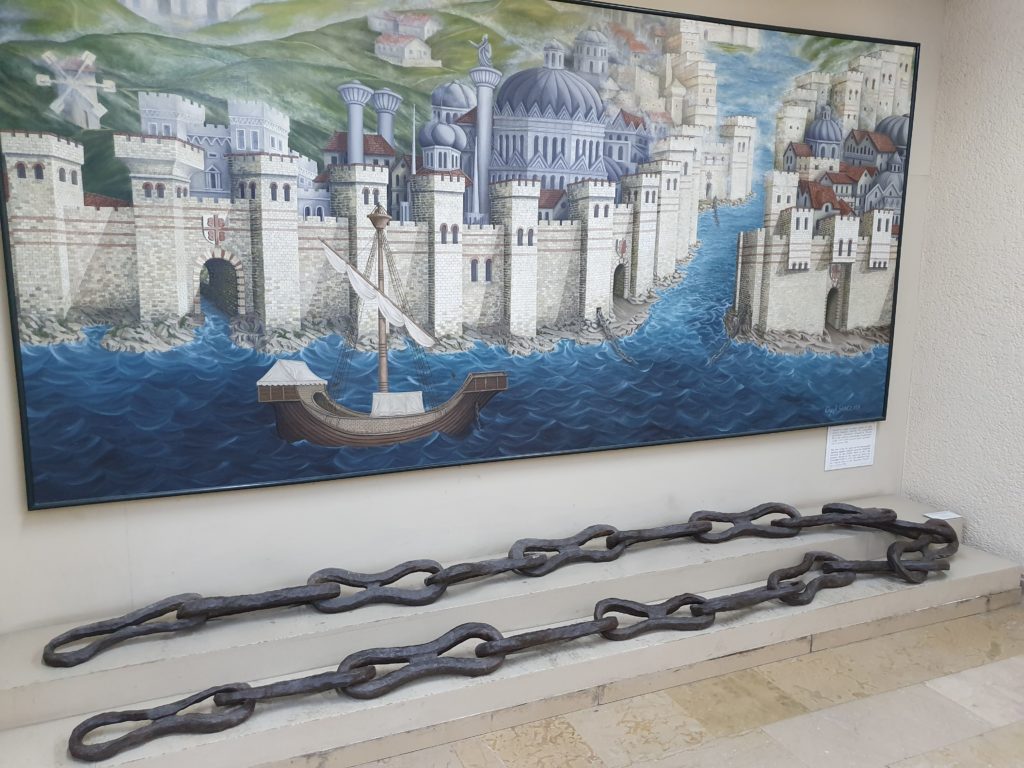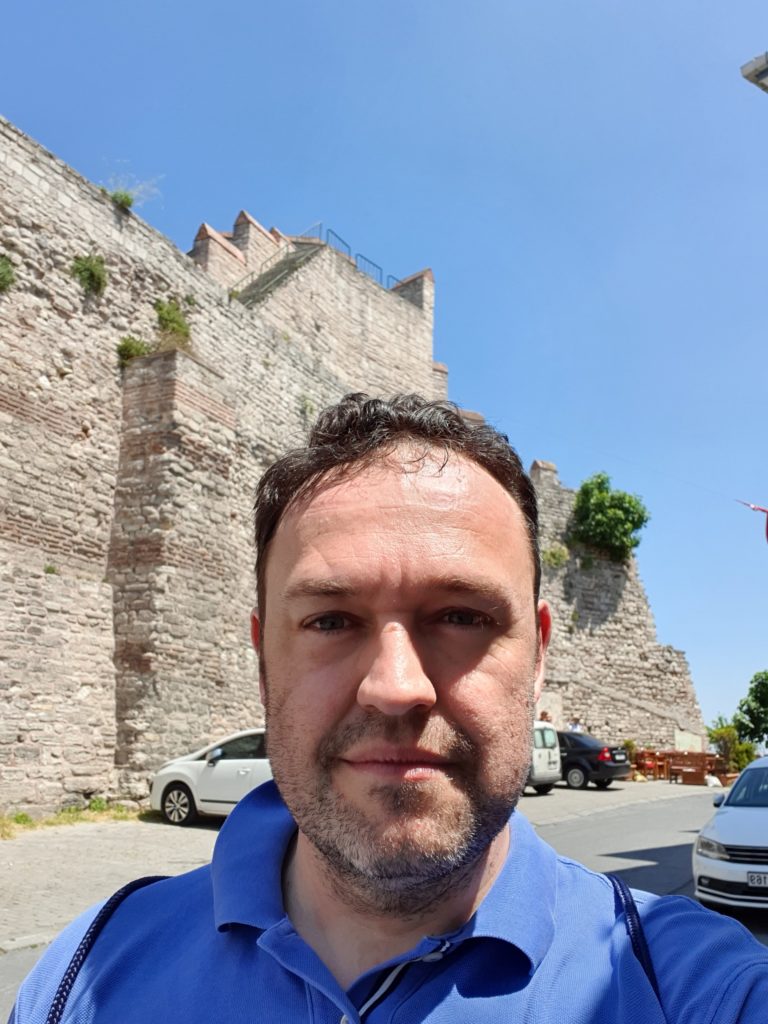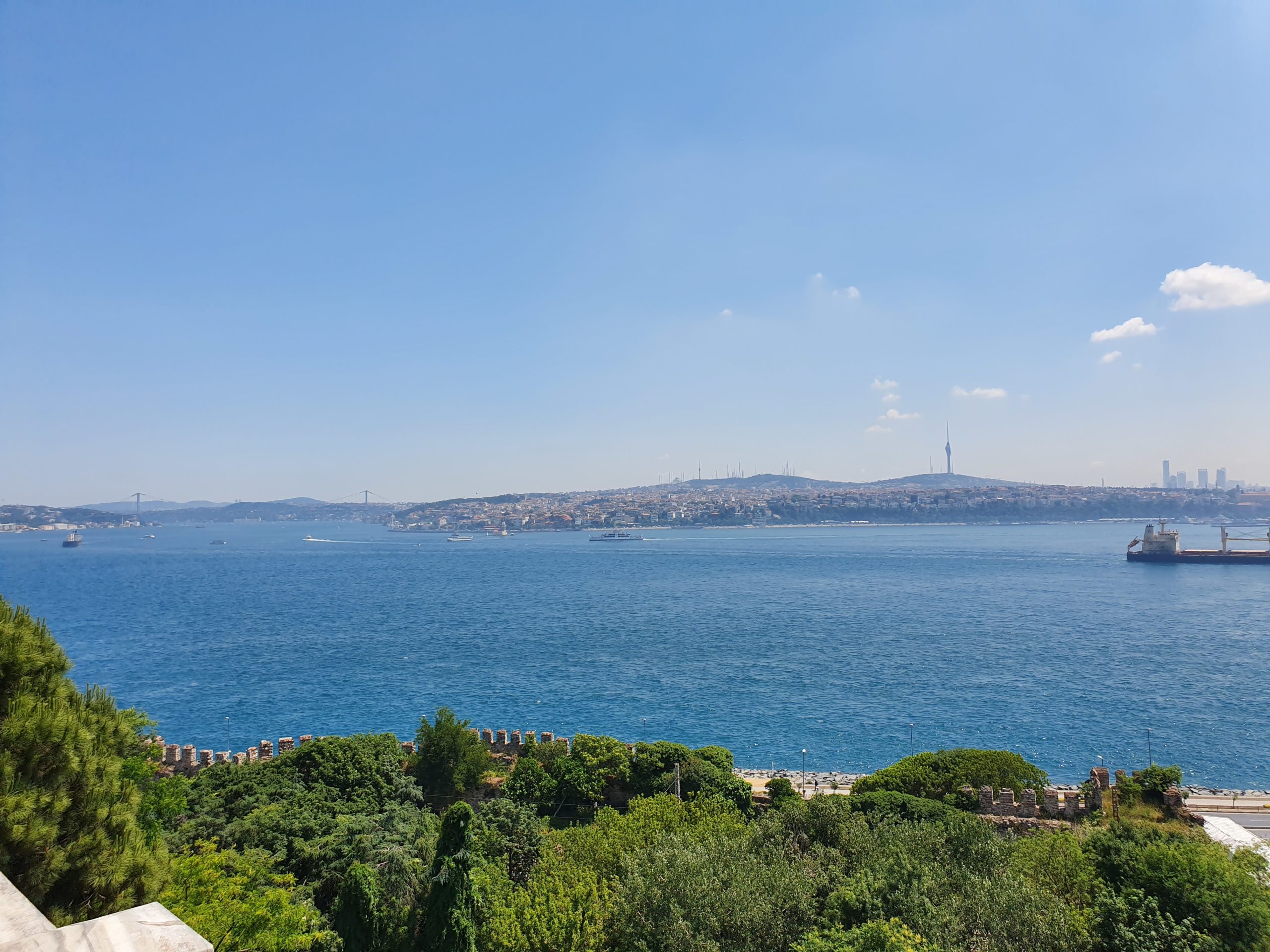No amount of time spent looking at maps can provide the same understanding as actually visiting a place. Nowhere was this made clearer to me when visiting Istanbul, the unique geography of which has played such a key role in its history. Equally a blog post with a few snapshots is a poor substitute for seeing things for yourself but I will try to capture a few of my reflections here.
Known originally as Byzantium the city really rose to prominence in 330 AD when the Emperor Constantine chose it to be the new Capital of the Roman Empire, and named it after himself, Constantinople. It remained thus in some form or another for over 1000 years Sometimes the capital of the whole empire, sometimes the Eastern Empire, and eventually of all that remained, with its territory fluctuating but gradually declining until it was finally conquered in 1453 by the Ottoman Turks.
It is famously located at the crossroad of Europe and Asia, now encompassing both continents the ancient city lay just on the European side, with the Bosphorus dividing it from Asia. As such it was powerfully placed to control trade through much of the known world.
The location had unique properties which made it almost impregnable. Ancient Constantinople sat on the tip of a peninsula on the Sea of Marmara (the modern city encompasses a much vaster area) at the entrance to the Bosphorus, which leads to the Black Sea. On the north side of the peninsula is the Golden Horn, one of the best deep water harbours in the world. Thus the area was surrounded by three sides with water, and the rest of the city was protected by the multi-layered Theodosian Walls, the most sophisticated defence system of antiquity. The areas facing the sea were further protected by Sea Walls and most ingeniously the harbour of the Golden Horn itself was protected by a giant chain that stretched across the entrance preventing ships from entering.

But even the best description, and I’m sure the above doesn’t qualify, can’t really capture the experience of seeing it for yourself. I’d read multiple books on the history of the city, on its establishment by Constantine, of the Byzantine Empire, and its eventual fall to Mehmet the Conqueror, but it wasn’t until the moment when I walked to the far eastern end of the Topkapi Palace, which sits on the end of the peninsula, and took in the panorama that everything fell into place. This blog is perhaps an imperfect attempt to capture that fleeting feeling of enlightenment.
To the south lay the Sea of Marmara, I could see container ships making their way towards and away from my position. Turning slowly towards the east, I followed as the Sea flowed into the Bosphorus and on the far side of that vast channel I could see the Asian side of the City. Turning northwards I could see up the Bosphorus as the strait made its way to the Black Sea, spanned by the famous Bosphorus Bridge that connects two continents. Turning further to the Northwest, I could see the Golden Horn flowing off the Bosphorus. It was nowhere near as wide as the Bosphorus and I could imagine how a chain could be stretched across it, and at the moment the whole geography of the city and everything I had read suddenly clicked and made sense.

Later that day, in a seemingly lost corner of the Archaeological Museum, accessible only by a small side door where I saw no other visitors my whole time there, I came across a room that actually contained a length of the original chain itself. It was the second epiphany of the day when all the books and all the history became immediately real and tangible, dare I say quite literally (as I mentioned the museum was otherwise unattended).
A journey the next day to the remains of the Theodosian Walls completed the picture and I could now see and feel how this now relatively tiny corner of the vast modern city of Istanbul held so much history, and could picture just how it defended itself against almost all-comers (one set of Crusaders excepted) for over a thousands years.

I will soon expand on this post soon with many more detailed reflections on the many other highlights of this exceptional city.

Beautiful photos. You have a wonderful post,, Those are beautiful pictures of your trip.. seems like it’s a great place to come and visit and have a wonderful trip story like you did. how long have you spent to explore all the beautiful places there ? regards